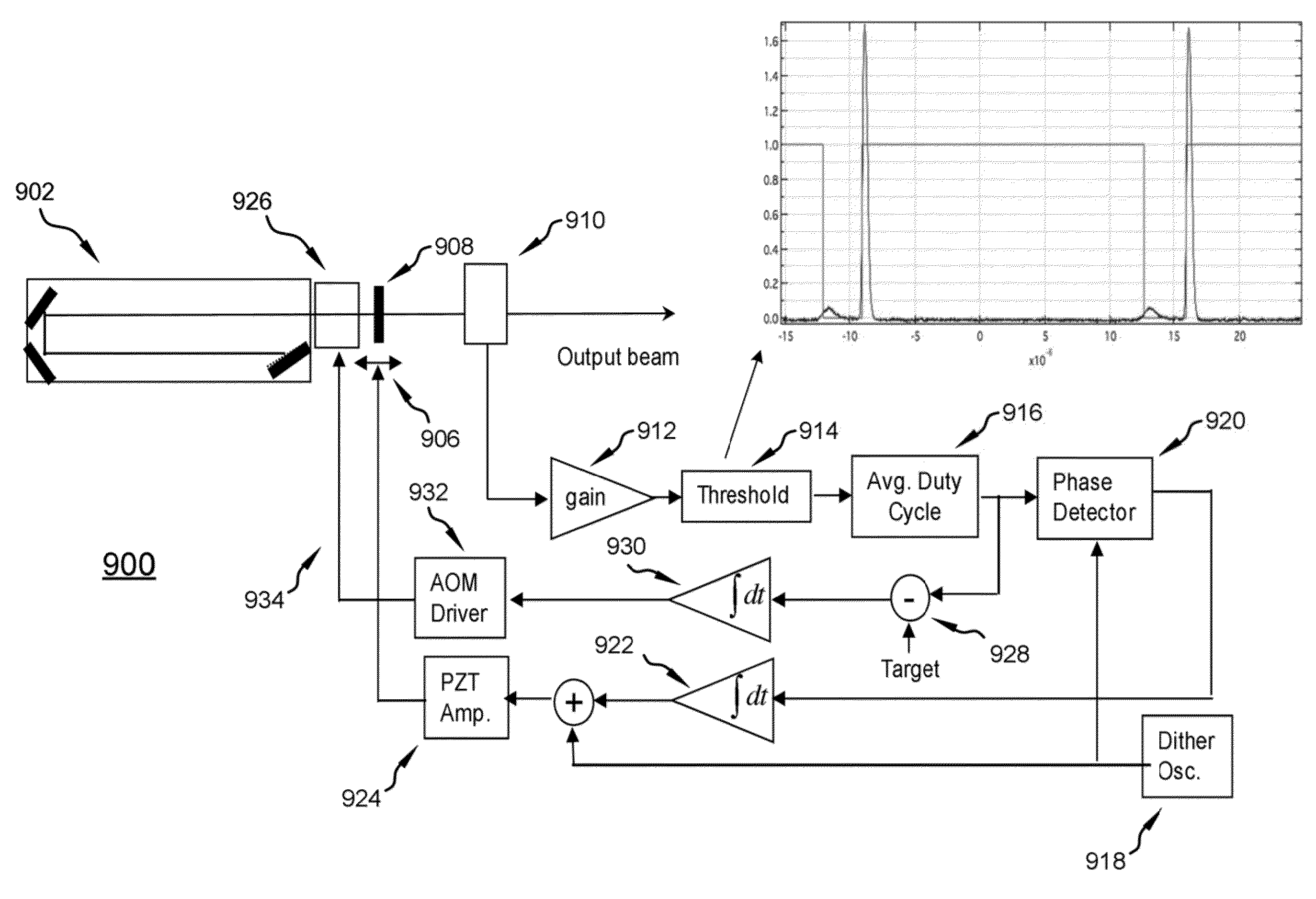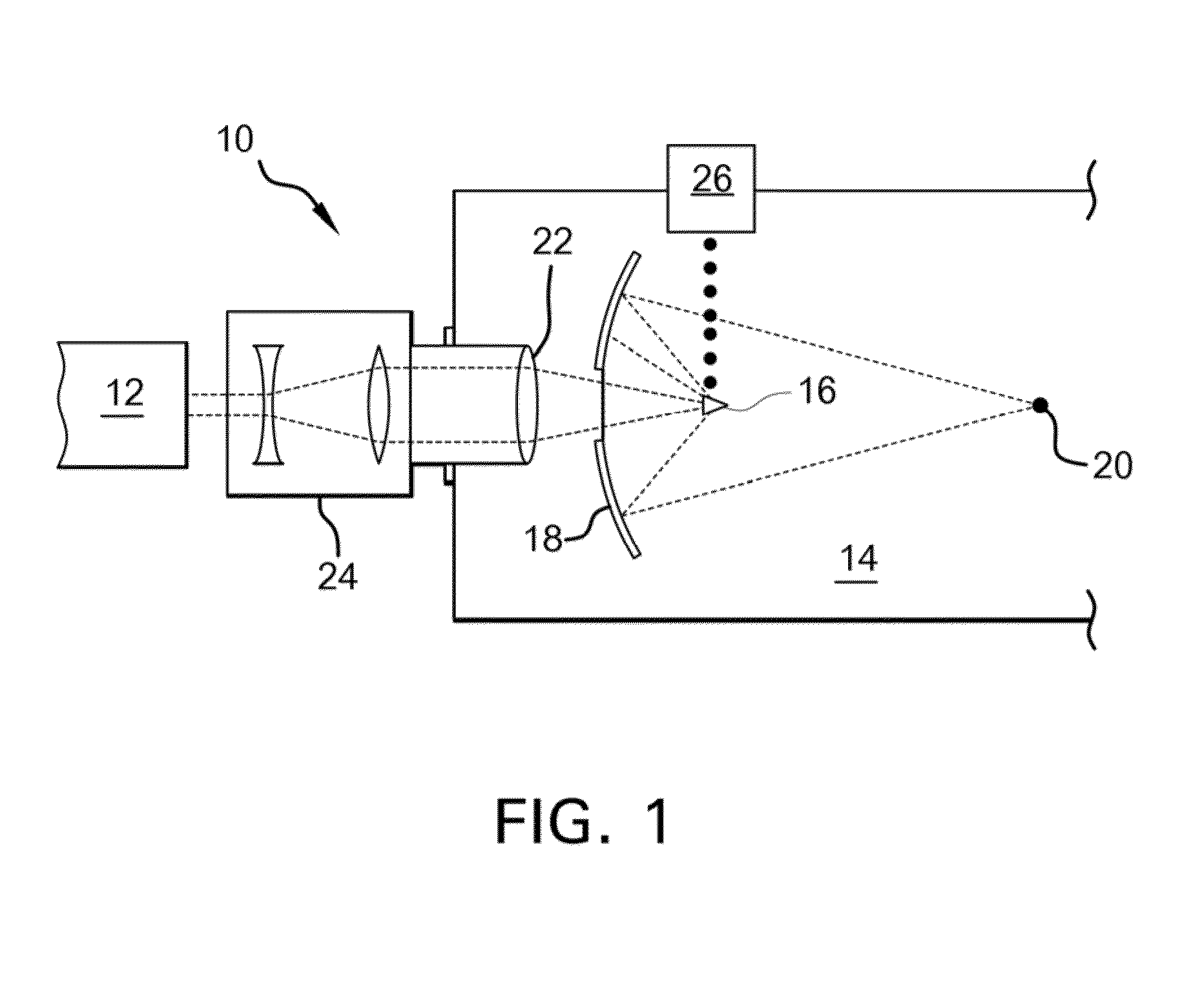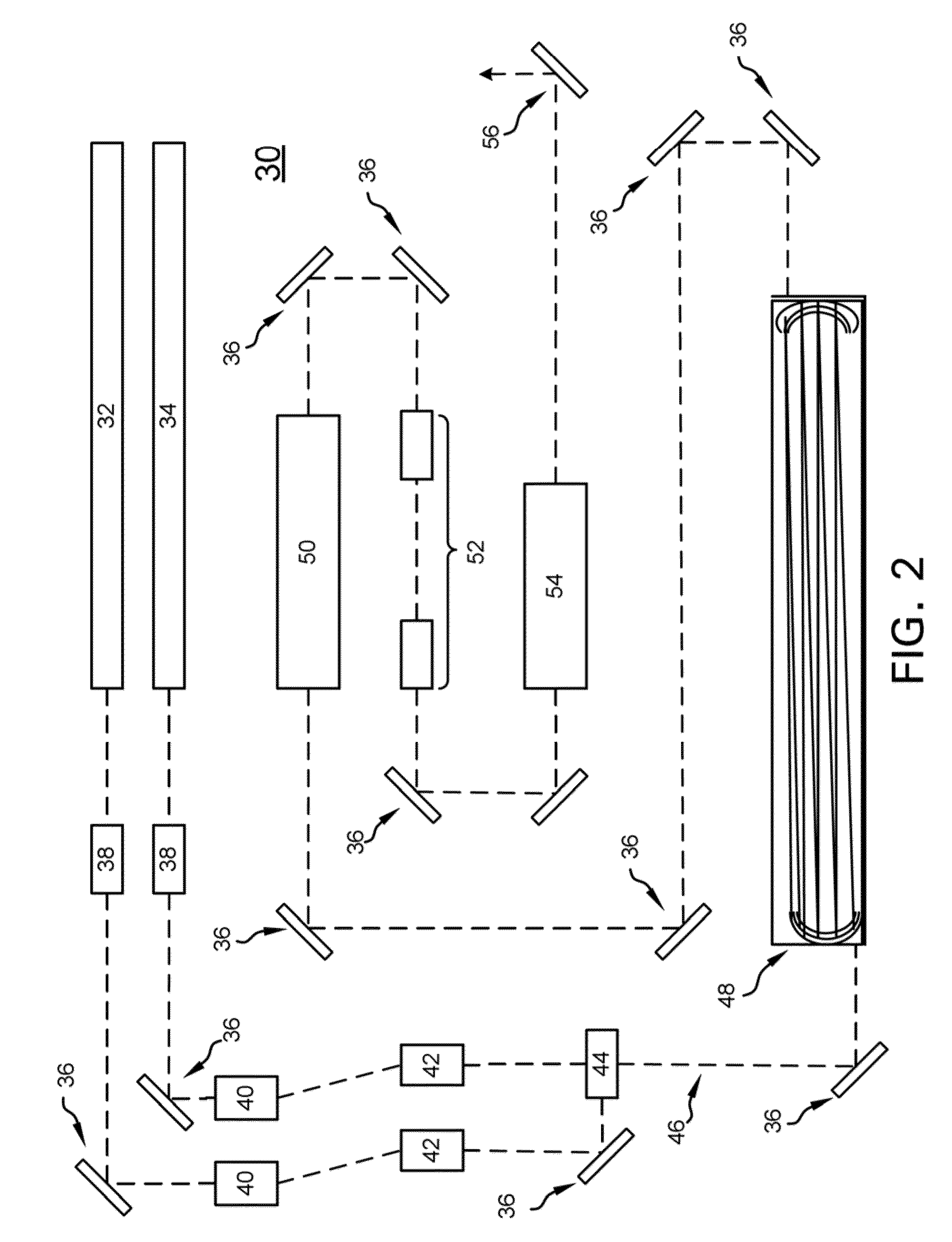System and Method for Seed Laser Mode Stabilization
a laser mode and stabilization technology, applied in the direction of laser details, wave amplification devices, electrical equipment, etc., can solve the problems of affecting the stability of the laser mode, the ratio between the duration of the pulse and the time between
- Summary
- Abstract
- Description
- Claims
- Application Information
AI Technical Summary
Benefits of technology
Problems solved by technology
Method used
Image
Examples
Embodiment Construction
[0030]The present application describes a method and apparatus for stabilizing a seed laser source(s) such as might be used in a laser produced plasma (LPP) extreme ultraviolet (EUV) light system.
[0031]In one embodiment, a method of stabilizing a seed laser source involves adjusting the cavity length of the laser by ill cans of a movable mirror forming one end of the cavity. The average output energy of the laser is measured at different mirror positions, and a mirror position selected which results in a cavity mode being aligned with the gain peak of the laser, thus producing a minimum pre-lasing delay from the termination of the previous pulse to the resumption of pre-lasing for the next output pulse, and thus jitter-free timing of output pulses. Feedback loops keep the laser output at maximum gain and efficiency, and the attenuation and timing at a desired operating point.
[0032]FIG. 1 is a simplified schematic view of some of the components of one embodiment of an LPP EUV light s...
PUM
 Login to View More
Login to View More Abstract
Description
Claims
Application Information
 Login to View More
Login to View More - R&D
- Intellectual Property
- Life Sciences
- Materials
- Tech Scout
- Unparalleled Data Quality
- Higher Quality Content
- 60% Fewer Hallucinations
Browse by: Latest US Patents, China's latest patents, Technical Efficacy Thesaurus, Application Domain, Technology Topic, Popular Technical Reports.
© 2025 PatSnap. All rights reserved.Legal|Privacy policy|Modern Slavery Act Transparency Statement|Sitemap|About US| Contact US: help@patsnap.com



